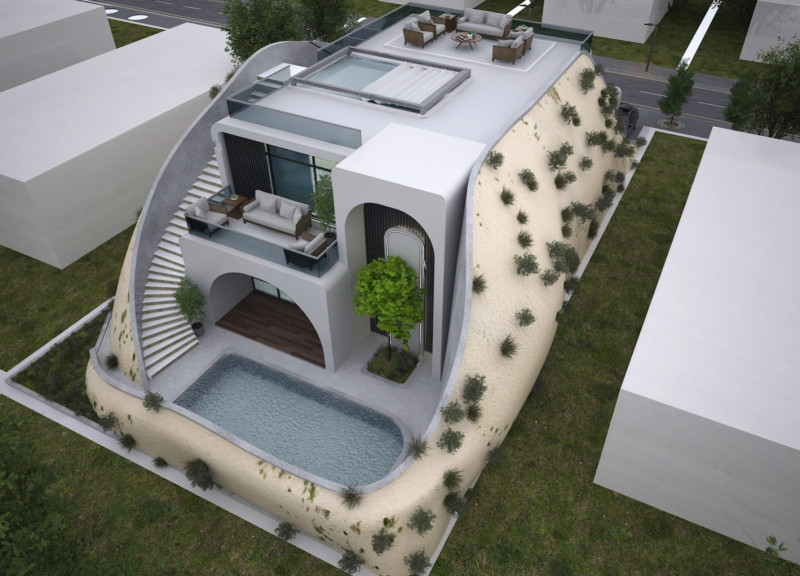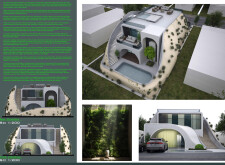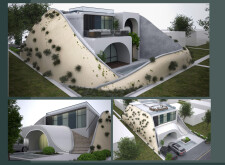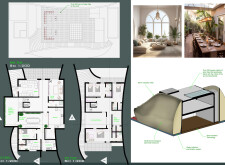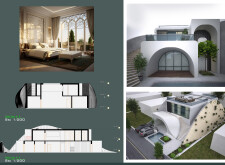5 key facts about this project
**Overview**
Located in Dubai, the Future House is an architectural expression that harmonizes contemporary design with traditional Emirati cultural elements. The project reflects a commitment to sustainability through thoughtful integration of modern technologies and local materials, creating a dialogue between past and present within the burgeoning urban environment.
**Materiality and Sustainability**
The design leverages a carefully selected palette of materials to enhance both ecological responsibility and aesthetic appeal. Key components include structural concrete for durability, extensive use of glass to maximize natural light and visual connection to the outdoors, and geothermal ecological sand for effective thermal insulation. The roof features over 200 square meters of solar tiles, significantly contributing to the building's energy efficiency. Additionally, the integration of native vegetation into the landscape promotes biodiversity and improves air quality.
The incorporation of innovative sustainability features is central to the house's design. An advanced water collection and filtration system minimizes reliance on municipal sources, while strategically placed windows facilitate natural ventilation, reducing the need for artificial cooling. These elements collectively lower the home's carbon footprint, demonstrating a proactive approach to environmental stewardship.
**Interior Organization**
The interior layout is designed to prioritize functionality and flexibility. The first floor comprises interconnected social areas, such as the living room, kitchen, and office, encouraging interaction and communal gatherings. On the second floor, private quarters, including master and guest bedrooms, are strategically positioned to optimize natural light and privacy. This thoughtful arrangement contributes to the overall livability of the space, enhancing the user experience within the home.
Noteworthy is the inclusion of a 'green wall' in the interior, echoing principles of biophilic design and bringing aspects of nature indoors, which reinforces the connection between occupants and their environment. The architectural approach thus articulates a coherent vision centered on comfort, sustainability, and cultural resonance.


